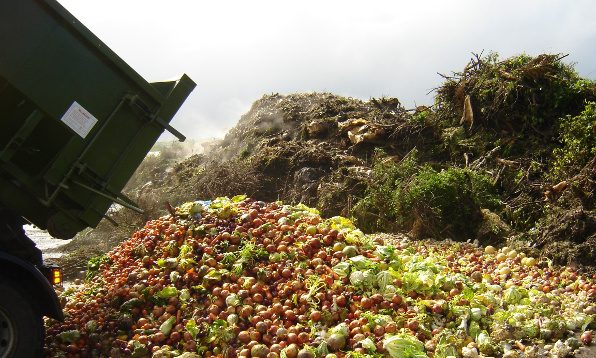It turns out Americans waste a lot more food than they expect, or believe they do. And the reason is, they either misunderstand or ‘err on the side of caution’ when interpreting ‘Best Before’ dates. Researchers have some suggestions for regulators and lawmakers to remedy the problem…
 When we hear the phrase, ‘food waste’, we usually think in terms of farmers dumping
When we hear the phrase, ‘food waste’, we usually think in terms of farmers dumping
‘ugly’ produce on the landfill, or supermarkets filling dumpsters with ‘less than
perfect’ food. But almost half of all food waste takes place in our homes!
A team from Ohio State University has discovered that average Americans (and, by association, Canadians and probably Europeans, as well) waste a lot of food simply because they don’t have a full or proper understanding of Best Before or Use By dates.
What they did
A recent study mined data gathered under the State of the American Refrigerator Survey and analysing information about refrigerator contents and practices from 307 initial survey participants and 169 follow-up surveys. Researchers asked about Fruits, Vegetables, Meats and Dairy – in particular how much was there and how much people expected to eat. Then, they followed up about a week later to find out what really happened. The surveys also asked about a variety of factors that may have influenced decisions to toss food, including date labels, odor, appearance and cost.
What they found
Survey participants expected to eat 97 percent of the Meat in their refrigerators but really finished only about half. They thought they’d eat 94 percent of their Vegetables, but consumed just 44 percent. They projected they’d eat about 71 percent of the Fruit and 84 percent of the Dairy, but finished off just 40 percent and 42 percent, respectively.
Questions about the reasons folks discarded food reveled that concerns about food safety – odour, appearance and dates on the labels – were top of mind.
“No one knows what ‘Use By’ and ‘Best By’ labels mean and people think they are a safety indicator when they are generally a quality indicator,” said Study Senior Author Dr. Brian Roe.
Analysis of Survey responses also showed that:
- People who cleaned out their refrigerators more often wasted more food.
- Those who check nutrition labels frequently waste less food. Roe speculated that those consumers may be more engaged in food and therefore less likely to waste what they buy.
- Younger households were less likely to use up the items in their refrigerators while homes to those 65 and older were most likely to avoid waste.
The takeaway
Roe and his colleagues propose some recommendations for lawmakers and regulators to help minimize waste. High on the list is a major revamp of the existing Best Before and Use By dates system, making it clearer what those terms mean.
“That’s especially important because much of the advice that consumers hear regarding food waste is to refrigerate (and eat) leftovers, and to ‘shop’ the refrigerator first before ordering out or heading to the store,” Roe explains. The problems is, a lot of people simply don’t understand what the current guidelines really mean, and tend to toss out perfectly good, wholesome, edible food just to ‘be on the safe side’.
Even my late step dad, who was an educated, logical an reasonable man, used to toss out perfectly good food because the ‘Best Before’ date had passed, in spite of the evidence of his own senses that it was still just fine to eat. “Why take chances?” he told me over and over again when I questioned this wasteful habit. He was susceptible to logic and practical demonstrations in formulating or altering his opinions or standards on other issues, but remained immovable on his overcautious position concerning food shelf (or fridge) life. Back in his day, I thought his stance was just a quirk. But now, with hindsight, I think his approach to food freshness and safety must have been typical of the majority.
My take
I can certainly understand why older folks would be less likely to waste food. Those 65 and over were either children during the Depression and the War years, and had dealt with real shortages first-hand, or learned their values and attitudes about food at the knees of their parents, who had been through those hard times.
I can also easily see folks who cleaned out their fridges more often would ‘err on the side of caution’ and throw out stuff that is not actually at its Best Before date , but ‘close’, just to be sure’…
I strongly second the advice given by experts that folks ‘shop’ their fridges before buying, opening or purchasing new food products. My credo: ‘Almost anything can be turned into a Burrito’. This morning, I’m having a Leftover Fried Fish, Spicy Fries, Cheese and Lettuce Burrito for breakfast. I didn’t know that until I shopped the fridge earlier this morning. The message there is, a little common sense and flexibility – maybe even a spirit of adventure – could go a long way toward reducing food waste.
But just being aware of how wasteful our society’s prevailing food waste habits really are is a shocking eye-opener. Roe reminds us that approximately one-third of all food produced is wasted, and that 43 percent of that waste takes place near the end of the food chain – in our homes. It’s up to all of us, as individuals, to do something about that!
~ Maggie J.

